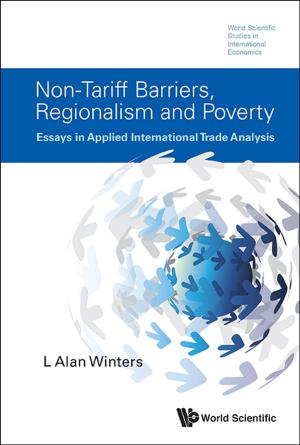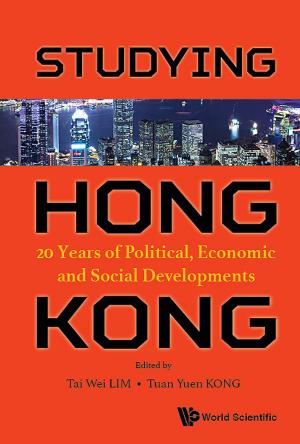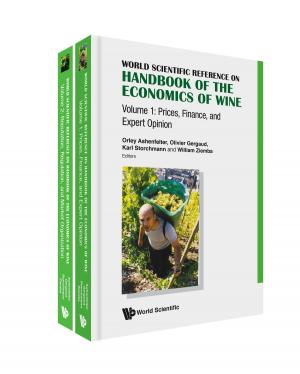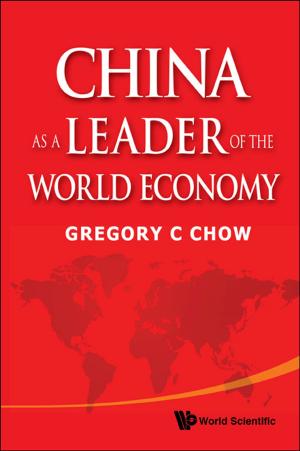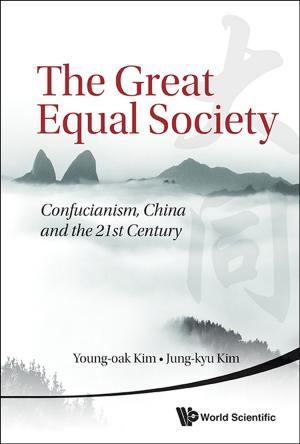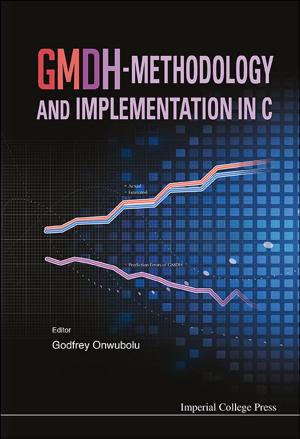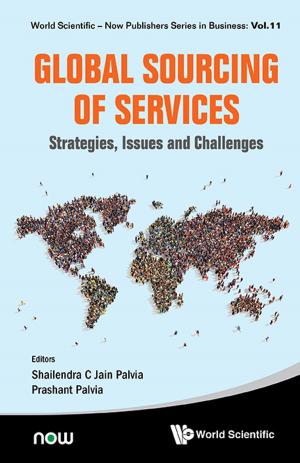Asian Free Trade Agreements and WTO Compatibility
Goods, Services, Trade Facilitation and Economic Cooperation
Business & Finance, Economics, International Economics, Nonfiction, Social & Cultural Studies, Political Science, International, International Relations| Author: | Shintaro Hamanaka | ISBN: | 9789814460422 |
| Publisher: | World Scientific Publishing Company | Publication: | January 13, 2014 |
| Imprint: | WSPC | Language: | English |
| Author: | Shintaro Hamanaka |
| ISBN: | 9789814460422 |
| Publisher: | World Scientific Publishing Company |
| Publication: | January 13, 2014 |
| Imprint: | WSPC |
| Language: | English |
It is an appropriate time to rethink the relationship between trade regionalism and multilateralism in the Asian context as we witness the proliferation of free trade agreements (FTAs) in Asia. In the 1980s and 1990s, many scholars and policymakers believed that Asian integration was market-based, rather than legal-based, and that Asian integration would never be codified through agreements. Yet today, there are a large number of FTAs signed and under negotiation in Asia.
This book investigates the appropriate relationship between regionalism and multilateralism, with a special reference to recent FTAs in Asia. It is undeniable that past trade multilateralism–regionalism debates centered on the trade-in-goods aspect. However, the majority of recent FTAs in Asia cover issues beyond trade-in-goods and tariff liberalization, such as trade facilitation, services, and economic cooperation. While the General Agreement on Tariffs and Trade (GATT) Article XXIV governs regional integration initiatives in trade in goods, there is no (or at most a thin) World Trade Organization (WTO) Agreement that stipulates the relationship between regionalism and multilateralism in issue areas other than goods.
Thus, this study carefully considers the meaning of “WTO-compatible FTAs” by distinguishing “WTO consistency” and “WTO friendliness”, going beyond GATT Article XXIV debates and proposes a general framework for examining the openness of regionalism in various issue areas by identifying tree-type questions to distinguish several types of exclusiveness. It then specifically asks the following questions: Can Asian FTAs that cover several issues be considered multilateralism friendly? How does the relationship between regionalism and multilateralism differ between trade-in-goods and non-goods issue areas? What are policies that might reduce the exclusiveness of regional initiatives? The study concludes by listing counterintuitive policy suggestions to make FTAs truly WTO compatible. The book also includes a comprehensive list of FTAs in Asia and several WTO Agreements relating to trade regionalism.
Contents:
- Introduction: Conceptualizing the WTO Compatibility of FTAs
- Analytical Framework for WTO Friendliness of FTAs: How to Check If They are Real “Friends” of WTO?
- Free Trade Agreements in Goods: Is Trade Bilateralism in Asia Consistent with WTO Rules and Norms?
- Regional Approaches to Trade Facilitation: Are Regional Trade Facilitation Measures Discriminatory Against Non-Members?
- Regional Services Agreements: What is the Value of GATS-Plus Regional Services Commitments?
- Economic Cooperation Under FTAs: Do FTAs Impose WTO-Plus Technical Assistance Obligations on Members?
- Conclusion: Counter-Intuitive Policy Implications for WTO-Compatible FTAs
Readership: Researchers, professionals, undergraduate and graduate students interested in Free Trade Agreements, World Trade Organization, Regionalism, Trade in Services and Trade Facilitation.
Key Features:
- Chapters first present the methodology relevant to analyze FTA's WTO compatibility in a particular area and then present case studies of Asian FTAs to examine their WTO compatibility, which is followed by the policy discussions on how to make FTAs more WTO-friendly
- The book is interdisciplinary covering economics, political science and international economic law
- Authored by ADB Economist specializing in FTA issues, the book provides readers with theoretically sound and empirically rich discussion on FTAs. The author knows both theory and practice of FTAs and WTO (served as negotiator at the Japanese Mission to the WTO; involved in the regional economic integration issues at the Office of Regional Economic Integration at ADB)
It is an appropriate time to rethink the relationship between trade regionalism and multilateralism in the Asian context as we witness the proliferation of free trade agreements (FTAs) in Asia. In the 1980s and 1990s, many scholars and policymakers believed that Asian integration was market-based, rather than legal-based, and that Asian integration would never be codified through agreements. Yet today, there are a large number of FTAs signed and under negotiation in Asia.
This book investigates the appropriate relationship between regionalism and multilateralism, with a special reference to recent FTAs in Asia. It is undeniable that past trade multilateralism–regionalism debates centered on the trade-in-goods aspect. However, the majority of recent FTAs in Asia cover issues beyond trade-in-goods and tariff liberalization, such as trade facilitation, services, and economic cooperation. While the General Agreement on Tariffs and Trade (GATT) Article XXIV governs regional integration initiatives in trade in goods, there is no (or at most a thin) World Trade Organization (WTO) Agreement that stipulates the relationship between regionalism and multilateralism in issue areas other than goods.
Thus, this study carefully considers the meaning of “WTO-compatible FTAs” by distinguishing “WTO consistency” and “WTO friendliness”, going beyond GATT Article XXIV debates and proposes a general framework for examining the openness of regionalism in various issue areas by identifying tree-type questions to distinguish several types of exclusiveness. It then specifically asks the following questions: Can Asian FTAs that cover several issues be considered multilateralism friendly? How does the relationship between regionalism and multilateralism differ between trade-in-goods and non-goods issue areas? What are policies that might reduce the exclusiveness of regional initiatives? The study concludes by listing counterintuitive policy suggestions to make FTAs truly WTO compatible. The book also includes a comprehensive list of FTAs in Asia and several WTO Agreements relating to trade regionalism.
Contents:
- Introduction: Conceptualizing the WTO Compatibility of FTAs
- Analytical Framework for WTO Friendliness of FTAs: How to Check If They are Real “Friends” of WTO?
- Free Trade Agreements in Goods: Is Trade Bilateralism in Asia Consistent with WTO Rules and Norms?
- Regional Approaches to Trade Facilitation: Are Regional Trade Facilitation Measures Discriminatory Against Non-Members?
- Regional Services Agreements: What is the Value of GATS-Plus Regional Services Commitments?
- Economic Cooperation Under FTAs: Do FTAs Impose WTO-Plus Technical Assistance Obligations on Members?
- Conclusion: Counter-Intuitive Policy Implications for WTO-Compatible FTAs
Readership: Researchers, professionals, undergraduate and graduate students interested in Free Trade Agreements, World Trade Organization, Regionalism, Trade in Services and Trade Facilitation.
Key Features:
- Chapters first present the methodology relevant to analyze FTA's WTO compatibility in a particular area and then present case studies of Asian FTAs to examine their WTO compatibility, which is followed by the policy discussions on how to make FTAs more WTO-friendly
- The book is interdisciplinary covering economics, political science and international economic law
- Authored by ADB Economist specializing in FTA issues, the book provides readers with theoretically sound and empirically rich discussion on FTAs. The author knows both theory and practice of FTAs and WTO (served as negotiator at the Japanese Mission to the WTO; involved in the regional economic integration issues at the Office of Regional Economic Integration at ADB)


